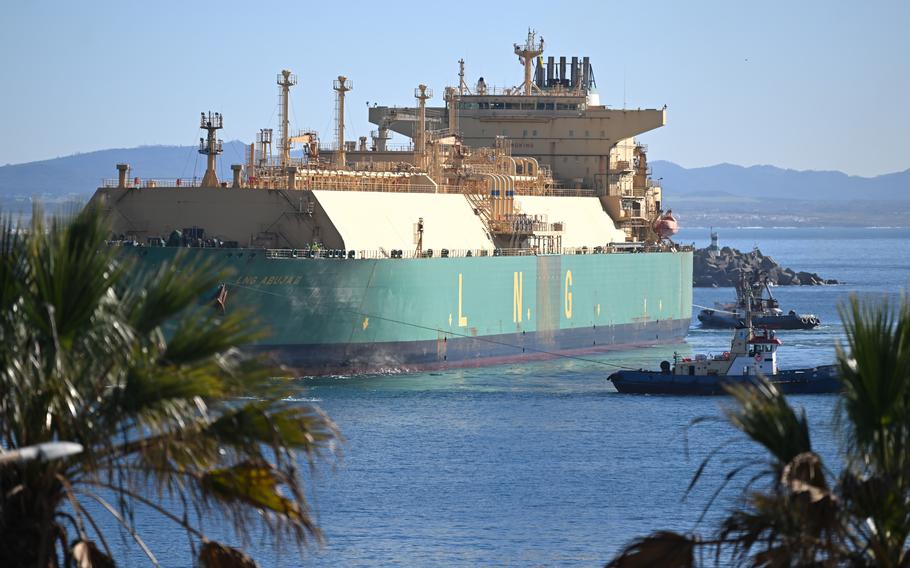
Tug boat and European gas. (Zed Jameson/Bloomberg)
European natural gas steadied after a drop in the previous session as traders assessed a report that the European Union is considering phasing out Russian LNG as part of a fresh package of sanctions.
Benchmark futures closed little changed after losing nearly 3% on Tuesday. Exiting Russia’s liquefied natural gas could be done either through sanctions or as part of a road map that the bloc’s executive arm is set to present next month, people familiar with the matter said.
While Europe’s pipeline gas flows from Russia have dwindled in recent years, it imported record LNG volumes from the country in 2024. The fuel has been a personal focus of Russian President Vladimir Putin, who has vowed to continue the nation’s exports despite mounting restrictions.
“A potential ban on Russian LNG will likely only add to supply uncertainty for the European market, potentially offering some support to prices,” Warren Patterson, head of commodities strategy at ING Groep NV, and Ewa Manthey, the bank’s commodities strategist, said in a note. “In 2024, around 18% of EU LNG imports came from Russia.”
The bloc still needs to decide whether it should rely on legally-binding sanctions, regulations as part of a road map, or a mix of those two, according to officials and diplomats with knowledge of the talks.
While 10 EU nations this week pushed for a ban on Russian LNG, the calls did not come from the biggest nations receiving the fuel, which include Spain, France and Belgium. The US last week sanctioned two smaller Russian LNG projects, Portovaya and Vysotsk.
Europe has managed to diversify its energy supplies since the 2022 crisis - making a phaseout of Russia’s fuel potentially less challenging - but this winter has served as a reminder that the region remains vulnerable. Cold weather has led to faster-than-usual withdrawals from gas storage sites, and prices are prone to sharp moves on supply risks.
For now, muted demand in Asia, particularly in China, provides respite as LNG cargoes divert to Europe. That’s contributed to the recent price drop in the region.
Still, for 2025 gas in Europe could average €47 a megawatt-hour - nearly 25% above the median consensus, Patricio Alvarez and Joao Martins, analysts at Bloomberg Intelligence, said in a note.
Germany, Europe’s biggest gas consumer, doesn’t expect a shortage for the rest of the winter despite the region’s loss of Russia flows via Ukraine, gas group INES said in a statement. However, the risk is that it will be too expensive to refill inventories for the next heating season.
“It is still technically possible to completely refill the gas storage facilities in summer 2025,” the group said. “However, there are no incentives to fill the gas storage facilities due to the clearly negative summer-winter spreads.”
Dutch front-month futures, Europe’s gas benchmark, settled 0.1% higher at €47.01 a megawatt-hour.
With assistance from Elena Mazneva and Petra Sorge.